To me, making a tape is like writing a letter – there’s a lot of erasing and rethinking and starting again […] A good compilation tape, like breaking up, is hard to do. You’ve got to kick it off with a corker, to hold the attention […], and then you’ve got to up it a notch, or cool it a notch, […] and . . . oh, there are loads of rules.
– Nick Hornby, High Fidelity (1995), pp. 88-89
I make a lot of mixes, and occasionally I post them on this blog. I’d originally planned to post many more of them, but . . . it’s fairly labor-intensive, and so I don’t. Recipients of these mixes have asked me how I make them. (Specifically, my friends Speed and Ted both asked me this question last month.) So, here is my answer.
Above: a mix from July 2000, when I moved from So. Carolina to Kansas
1. No repeats. Since I began making these on CD (2003), I’ve not repeated any song across the three main mix series: uptempo (which I make the most frequently), midtempo, and quiet. You could listen to all three series and not hear a single song repeated. Indeed, within any given series – the kids mixes, birthday mixes, mixes on a theme (Summer, Halloween, Christmas/Holidays, Back-to-School, the end of the world), etc. – no song can repeat.
2. Only one song per artist per CD. But that’s artist, and not composer. You can have two Cure songs, as long as one is a cover. Technically, you should not have a Matt Berninger solo track if you already have a song from the National (the band for which he is lead singer), though this is a little more flexible – I bend this “should,” from time to time, including on the mix that I’m about to offer as an example.
3. There needs to be some connection between adjacent tracks. So, on my most recent midtempo mix, “Everyone Says ‘Hi,’” here are the connections between the first seven songs. (If this is more detail than you really need, feel free to skip ahead to point no. 4.)
Everyone Says “Hi”
1) Pennies From Heaven RON SEXSMITH (2013)
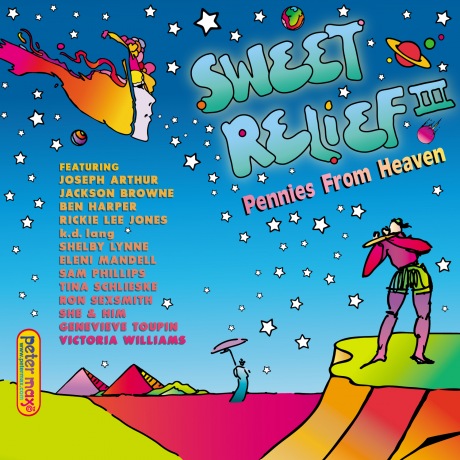 This beautiful song seamlessly mingles optimism and melancholy, cheer and sadness. Written by Johnny Burke and Arthur Johnston and first recorded in the mid-1930s, “Pennies from Heaven” has an introductory verse that often gets omitted (Bing Crosby’s 1936 recording includes it; Billie Holiday’s 1936 recording does not). Ron Sexsmith’s version – done for Sweet Relief III: Pennies from Heaven – includes that opening verse, which is one reason I chose it. The other reason is that it sets the tone for the rest of the mix, and that tone is … mixed. It’s neither joyous nor sad, but somewhere in between. (Perhaps, too, it’s why Dennis Potter chose the title for his teleplay/screenplay?)
This beautiful song seamlessly mingles optimism and melancholy, cheer and sadness. Written by Johnny Burke and Arthur Johnston and first recorded in the mid-1930s, “Pennies from Heaven” has an introductory verse that often gets omitted (Bing Crosby’s 1936 recording includes it; Billie Holiday’s 1936 recording does not). Ron Sexsmith’s version – done for Sweet Relief III: Pennies from Heaven – includes that opening verse, which is one reason I chose it. The other reason is that it sets the tone for the rest of the mix, and that tone is … mixed. It’s neither joyous nor sad, but somewhere in between. (Perhaps, too, it’s why Dennis Potter chose the title for his teleplay/screenplay?)
2) Heaven SIMPLY RED (1985)
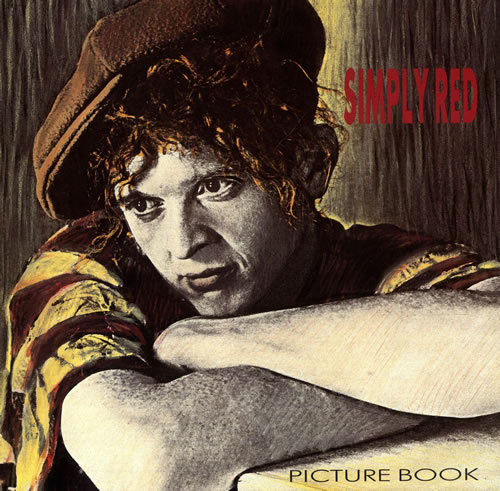 “Pennies from Heaven” to this cover of Talking Heads’ “Heaven” is quite an obvious link: the title, and the fact that both are covers. It also continues the theme of emotional complexity. Though sung with sincerity (by David Byrne on the original, and by Simply Red’s Mick Hucknall here), the description of Heaven is ambiguous. “Heaven is a place, / A place where nothing ever happens”: does that imply pleasant solitude or endless boredom? “The band in heaven / They play my favorite song. / Play it one more time. / Play it all night long”: does this reflect the joy of getting to hear your favorite music or the annoyance of a popular song getting overplayed? I don’t know, and the song never resolves this tension. I chose the Simply Red cover because it’s a bit smoother, more soulful than Talking Heads’ original, and thus offers a more seamless transition from Sexsmith’s track to the next one.
“Pennies from Heaven” to this cover of Talking Heads’ “Heaven” is quite an obvious link: the title, and the fact that both are covers. It also continues the theme of emotional complexity. Though sung with sincerity (by David Byrne on the original, and by Simply Red’s Mick Hucknall here), the description of Heaven is ambiguous. “Heaven is a place, / A place where nothing ever happens”: does that imply pleasant solitude or endless boredom? “The band in heaven / They play my favorite song. / Play it one more time. / Play it all night long”: does this reflect the joy of getting to hear your favorite music or the annoyance of a popular song getting overplayed? I don’t know, and the song never resolves this tension. I chose the Simply Red cover because it’s a bit smoother, more soulful than Talking Heads’ original, and thus offers a more seamless transition from Sexsmith’s track to the next one.
3) Little Vacation VIC CHESNUTT (1996)
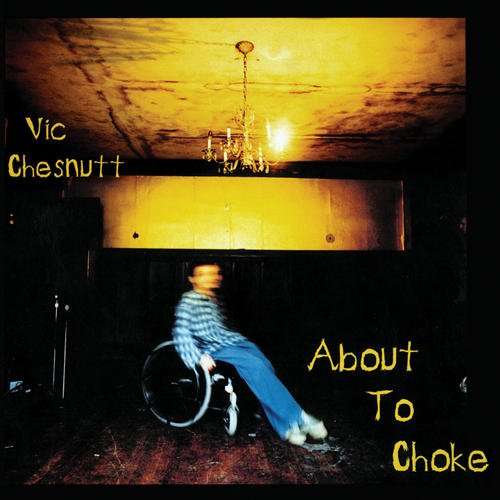 For those who believe in an afterlife, Vic Chesnutt (1964-2009) is already there. With a sharper sense of irony than the Talking Heads tune, this one also describes a desired location in terms that make you wonder how desirable it is, really. Perhaps it would be better if I stayed home. Vacation is a metaphor for what he wants, and so is “scenic vista,” “a long awaited chemical buzz,” “a far off twister,” and “an unexpected run-in with the fuzz.” The first item in this list has more appeal than the last one, and the ones in between are more mixed (hey, at least the twister is far off…). Using the language of bureaucracy to describe a holiday is also brilliant: “Why don’t we have a little council meeting / And hash out something real?” He promises “Robert’s rules of order will be observed. / I’ll be the parliamentarian / with an unswerving dedication.” The ambivalent longing here is brilliant, plus (on a less important point) I like the fact that “a little old song that I want to hear” echoes “my favorite song” in “Heaven.”
For those who believe in an afterlife, Vic Chesnutt (1964-2009) is already there. With a sharper sense of irony than the Talking Heads tune, this one also describes a desired location in terms that make you wonder how desirable it is, really. Perhaps it would be better if I stayed home. Vacation is a metaphor for what he wants, and so is “scenic vista,” “a long awaited chemical buzz,” “a far off twister,” and “an unexpected run-in with the fuzz.” The first item in this list has more appeal than the last one, and the ones in between are more mixed (hey, at least the twister is far off…). Using the language of bureaucracy to describe a holiday is also brilliant: “Why don’t we have a little council meeting / And hash out something real?” He promises “Robert’s rules of order will be observed. / I’ll be the parliamentarian / with an unswerving dedication.” The ambivalent longing here is brilliant, plus (on a less important point) I like the fact that “a little old song that I want to hear” echoes “my favorite song” in “Heaven.”
4) Everyone Says ‘Hi’ DAVID BOWIE (2002)
 This song and the next one both include the line that gives the mix its title. Both songs find a twinge of melancholy in the clichéd, well-meaning phrase – conveying the good wishes of those who are not here, bringing their absence into the present moment. So, the link to “Little Vacation” is the likelihood of using this very phrase while on vacation, and the sense, when traveling, of enjoying where you are but missing those who are not with you. The Bowie song addresses someone who has not just taken “a big trip,” but “moved away.” It’s not clear if the addressee is even among the living (another link to the previous two songs). The final line of the first verse is “Happened oh, so quietly, / they say” which could also be used to describe someone’s death. That said, the person could simply have moved away, left no forwarding address. She or he could be someone Bowie’s narrator will never see again.
This song and the next one both include the line that gives the mix its title. Both songs find a twinge of melancholy in the clichéd, well-meaning phrase – conveying the good wishes of those who are not here, bringing their absence into the present moment. So, the link to “Little Vacation” is the likelihood of using this very phrase while on vacation, and the sense, when traveling, of enjoying where you are but missing those who are not with you. The Bowie song addresses someone who has not just taken “a big trip,” but “moved away.” It’s not clear if the addressee is even among the living (another link to the previous two songs). The final line of the first verse is “Happened oh, so quietly, / they say” which could also be used to describe someone’s death. That said, the person could simply have moved away, left no forwarding address. She or he could be someone Bowie’s narrator will never see again. 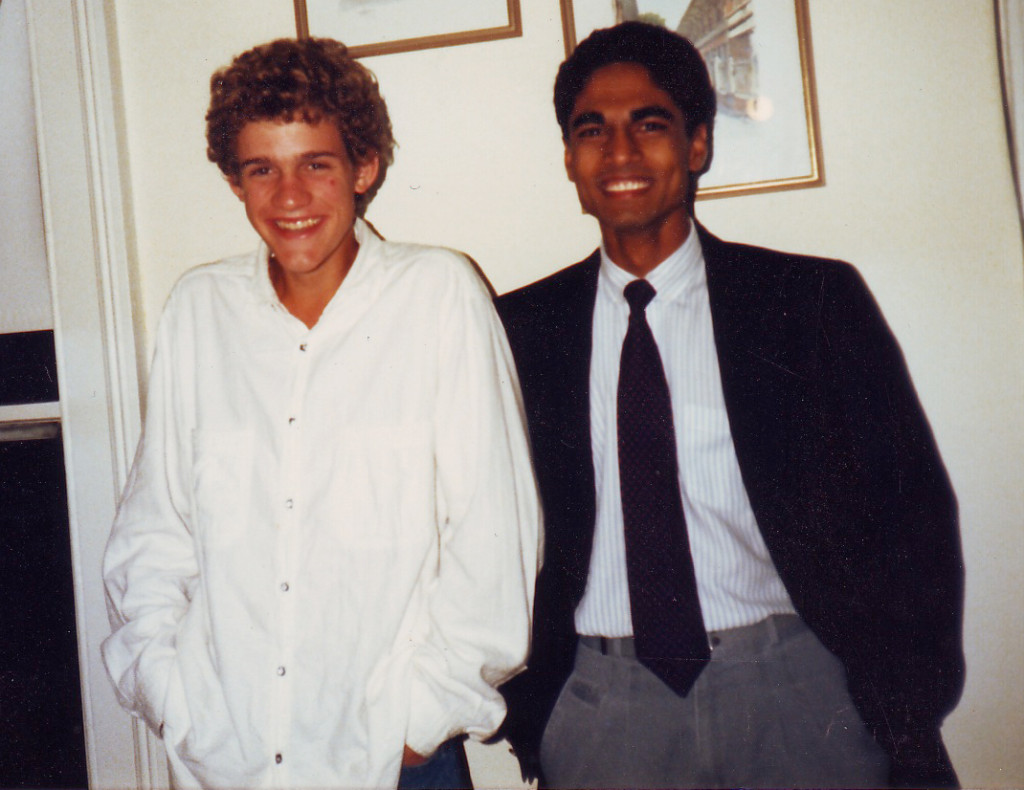 I have a friend like that. I last saw him in May 1989. He disappeared later that year, or perhaps it was early the following year. After making some inquiries, I learned why.* So, Shahid, if you happen upon this blog post, I hope you are well. Please know that your old friends still think of you. Everyone says “Hi.”
I have a friend like that. I last saw him in May 1989. He disappeared later that year, or perhaps it was early the following year. After making some inquiries, I learned why.* So, Shahid, if you happen upon this blog post, I hope you are well. Please know that your old friends still think of you. Everyone says “Hi.”
5) To All My Friends JOSH JOPLIN (2005)
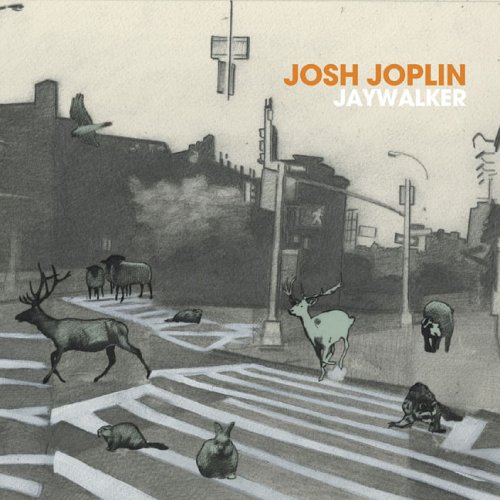 Beyond including the title line, this track also evokes this vocal lineage that begins with David Bowie, and continues through his spiritual offspring, the Psychedelic Furs’ Richard Butler (who sounds a bit like Bowie), and then Josh Joplin (whose voice resembles Butler’s – even though Joplin’s song “Happy at Last” alleges “I sound like Michael Stipe”). As the “s” in the title indicates, this song addresses many friends who have passed out of Joplin’s life. The line “winter of our unpaid rent” (nice Richard III allusion, Joplin!) might refer to a former lover, or at least a roommate; “summer of unrequited love” suggests a hoped-for relationship; “the best minds of my troubled youth” (Allen Ginsberg allusion!) evokes the many musicians that Joplin may know. One could make a full mix just focusing on songs for missed friends – Neil Young’s “One of These Days” would of course be included, though isn’t on this mix because I’ve used it before. So, instead,…
Beyond including the title line, this track also evokes this vocal lineage that begins with David Bowie, and continues through his spiritual offspring, the Psychedelic Furs’ Richard Butler (who sounds a bit like Bowie), and then Josh Joplin (whose voice resembles Butler’s – even though Joplin’s song “Happy at Last” alleges “I sound like Michael Stipe”). As the “s” in the title indicates, this song addresses many friends who have passed out of Joplin’s life. The line “winter of our unpaid rent” (nice Richard III allusion, Joplin!) might refer to a former lover, or at least a roommate; “summer of unrequited love” suggests a hoped-for relationship; “the best minds of my troubled youth” (Allen Ginsberg allusion!) evokes the many musicians that Joplin may know. One could make a full mix just focusing on songs for missed friends – Neil Young’s “One of These Days” would of course be included, though isn’t on this mix because I’ve used it before. So, instead,…
6) Friend of Mine STEVE MARTIN & EDIE BRICKELL (2013)
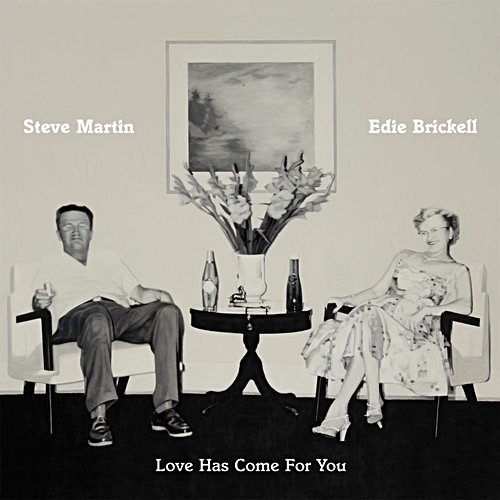 Another song about friendship, but this time to someone who is still here. Like Bill Withers’ “Lean on Me” (another great song for a friendship mix!), this collaboration between Steve Martin & Edie Brickell talks about friends who help you survive: “When everybody lets me down / You lift me up again.” I also concur with the lyric’s thesis about life more generally: “The world is such a crazy place, / Full of joy and pain.” Yes. Life is beautiful and sad. This past week’s news has delivered much more of the sad, the painful, the heartbreaking….
Another song about friendship, but this time to someone who is still here. Like Bill Withers’ “Lean on Me” (another great song for a friendship mix!), this collaboration between Steve Martin & Edie Brickell talks about friends who help you survive: “When everybody lets me down / You lift me up again.” I also concur with the lyric’s thesis about life more generally: “The world is such a crazy place, / Full of joy and pain.” Yes. Life is beautiful and sad. This past week’s news has delivered much more of the sad, the painful, the heartbreaking….
7) All Our Endless Love THE BIRD AND THE BEE feat. MATT BERNINGER (2014)
 Addressing not only friendship but love, this song continues the emotional resonance of the previous one, but moves directly into the intensity and fragility of intimate relationships. Amidst a deep bond, this one may also be coming apart. “I am falling to the rhythm of all your endless love” points both to falling-in-love expressed in the first verse (“I couldn’t breathe without you there”) but also to a falling-out-of-love, expressed in such lines as “Is this really ending?”
Addressing not only friendship but love, this song continues the emotional resonance of the previous one, but moves directly into the intensity and fragility of intimate relationships. Amidst a deep bond, this one may also be coming apart. “I am falling to the rhythm of all your endless love” points both to falling-in-love expressed in the first verse (“I couldn’t breathe without you there”) but also to a falling-out-of-love, expressed in such lines as “Is this really ending?”
That’s the first third of the mix, and more than enough to convey the links between songs.
4. Variety. Ideally (and especially on an uptempo mix), two adjacent songs won’t be too similar in style, though this isn’t an ironclad rule. A link between songs (see no. 3) can be purely sonic. In general, I think of the range as “from punk to show tunes,” by which I mean you can include swing, heavy metal, hip-hop, rock ‘n’ roll, dance, folk, funk, reggae, R&B, trip-hop, novelty records, garage rock, new wave, blues, a cappella, jazz, J-pop, 1960s Italian film soundtrack music, gospel, and, yeah, punk and show tunes. For an uptempo mix, all of these would need to be uptempo. For the quiet mixes, you’ll likely have more a cappella, classical, jazz (and no metal). Similarly, the midtempo mixes (such as the example given in no. 3) tend to have a narrower range (no metal there either…).
5. The mixes tend to be present-centered, but are not only present-centered. So, most songs are relatively current – from the current year or the past decade. But it would be very rare to focus only on recent music. Generally, the timespan is the 1930s to the present, though occasionally there’ll be something from the 1920s or earlier. The mix above includes several more recent recordings of songs from earlier periods (“Pennies from Heaven,” “When You’re Smiling,” “Pure Imagination”), though I often use earlier versions.
6. Since mixes get played more than once, I try to pick songs that bear repeated listens. I realize that this one depends on taste. Playing your favorite song once again (as in song no. 2 on the above mix) can be heaven… or can be hell.
7. I favor shorter songs over longer ones. If there is a long song, it’s likely to go last. This is something of a corollary to point nos. 6 (I don’t want to wear down the listener with a song that goes on and on) and 4 (shorter songs allow for more variety).
8. Beginnings: I try to start a mix with a good kick-off song – “a corker,” as Nick Hornby says. Sometimes, I will use a short spoken-word piece (dialogue from an old film or a musical, say).
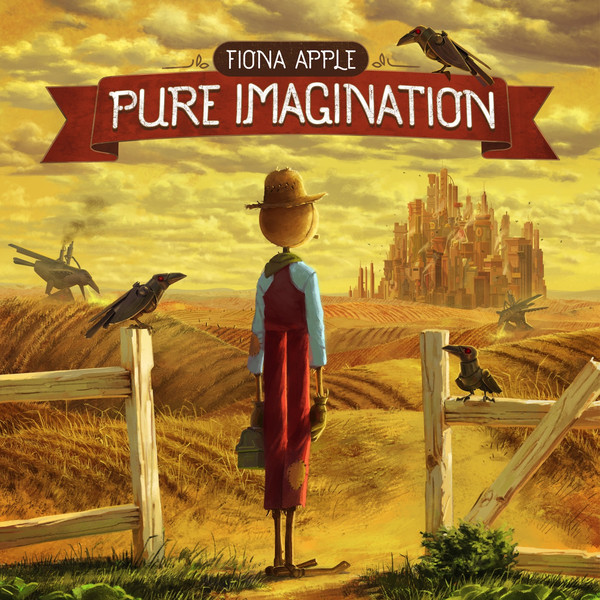 9. Endings: I might slow it down a little at the end or I might not. This can also be a place for spoken-word pieces, or perhaps the concluding music to a film. For the mix excerpted in no. 3, I conclude with Fiona Apple’s cover of “Pure Imagination” because both Gene Wilder’s original recording and especially her version bring to the fore some dissonance that undercuts the ostensibly optimistic lyric. Also, if you’re playing a CD in a car, it’s likely to repeat. Moving from “Pure Imagination” back to “Pennies from Heaven” works well. Both songs dream of something better, but they are just that – dreams.
9. Endings: I might slow it down a little at the end or I might not. This can also be a place for spoken-word pieces, or perhaps the concluding music to a film. For the mix excerpted in no. 3, I conclude with Fiona Apple’s cover of “Pure Imagination” because both Gene Wilder’s original recording and especially her version bring to the fore some dissonance that undercuts the ostensibly optimistic lyric. Also, if you’re playing a CD in a car, it’s likely to repeat. Moving from “Pure Imagination” back to “Pennies from Heaven” works well. Both songs dream of something better, but they are just that – dreams.
10. Use all of the space. A CD holds one hour, 19 minutes, and 45 seconds. I try to come as close as I can to filling the whole thing. This became part of my criteria back in the days of cassette tapes: blank space at the end of a side (especially side A) was annoying because then you’d have to fast-forward to the end. Ideally, you’d pick a song that would conclude roughly as the cassette tape did. Sometimes, I would fade out a song slightly early or (to fill space) add a very short song just so that there’d be no (or very little) silence at the end.
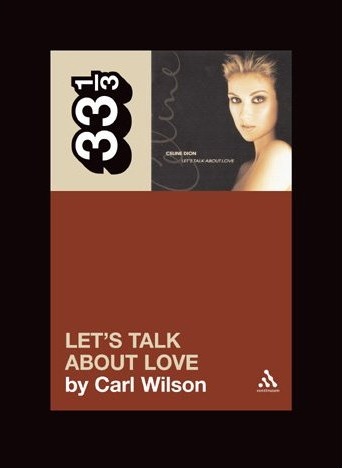 11. Good taste, which is nearly impossible to define. My mix-making guidelines ultimately rest upon my own taste, for which I direct you to this blog post on Carl Wilson’s excellent Let’s Talk About Love: A Journey to the End of Taste (and no, this isn’t Beach Boy Carl Wilson; it’s Canadian music journalist Carl Wilson). That post is the most fully articulated expression of whatever the heck my taste is.
11. Good taste, which is nearly impossible to define. My mix-making guidelines ultimately rest upon my own taste, for which I direct you to this blog post on Carl Wilson’s excellent Let’s Talk About Love: A Journey to the End of Taste (and no, this isn’t Beach Boy Carl Wilson; it’s Canadian music journalist Carl Wilson). That post is the most fully articulated expression of whatever the heck my taste is.
If I were to try to further clarify that, I’d note that I’m a big fan of cover tunes in general. So, it’s unusual to have a mix that lacks a cover. My favorite cover artists are Scott Bradlee and Postmodern Jukebox (if you’ve yet to discover them, stop reading this blog post now, go to YouTube, and start listening) and Me First and the Gimme Gimmes (superlative punk covers).
In addition to punk, I love ’60s soul and R&B (Aretha Franklin, Smokey Robinson, the Temptations, Marvin Gaye, the Isley Brothers, the Supremes), & the great American songbook (Berlin, Gershwin, Porter, Harburg, Arlen, Fields and Kern, Warren and Dubin, etc.).
Musically, I came of age in the 1980s; so, the styles of that era have a strong hold on my musical imagination. This is likely one reason why the Wombats are one of my favorite contemporary pop groups: tight hooks, surprising lyrics (“Please allow me to be your anti-depressant. / I am prescribed as freely as any decongestant”). I recommend their first two albums, and (I expect) the third, once it comes out, later this year!
As the quoted lyric indicates, I like words: I appreciate a sense of humor, an unusual turn of phrase, etc. Hence, my affection for novelty records. I also like a cappella. I’m a sucker for a good hook. I like pop, but I like it best when it’s a little off-kilter – an uptempo song on a melancholy subject, a downbeat cover of a happy song, an unusual or incisive lyric, a haunting melody.
My favorite band is They Might Be Giants. Lately, I’ve been listening to a lot of the National. Other favorite artists: Fats Waller, the Clash, Ella Fitzgerald, Hem, Chet Baker, Leonard Cohen, Moxy Früvous, Paul Simon, Mavis Staples, Warren Zevon, Billie Holiday, Laurie Anderson, Elvis Costello, Squeeze, Dessa (A Badly Broken Code is one of my desert island discs), Richard Goode (love his recording of Beethoven’s late piano sonatas).
Though I could ramble on and on about taste (indeed, I already have…), this post has run its course. Yes, it’s a highly subjective set of criteria for assembling a mix, but there is an internal logic to it, a sensibility (however idiosyncratic) that makes it all work. If you have strong opinions (and music fans tend to), please do feel free to express them, below.
__________
* Well, it turns out I didn’t know why. I thought I knew why, but if what I learned this afternoon (14 Sept. 2015) is true, then … what I’d learned before was but a vague inkling. [This footnote added 14 Sept. 2015. Obviously.]


Pingback: Coronavirus has turned New York into a ghost town, so I'm making a 'mixtape' to cope |
Pingback: Coronavirus has turned New York into a ghost town, so I’m making a ‘mixtape’ to cope
Pingback: Coronavirus has turned New York into a ghost town, so I'm making a 'mixtape' to cope - NewsViReal
Pingback: Coronavirus has turned New York into a ghost town, so I’m making a ‘mixtape’ to cope – Green Money